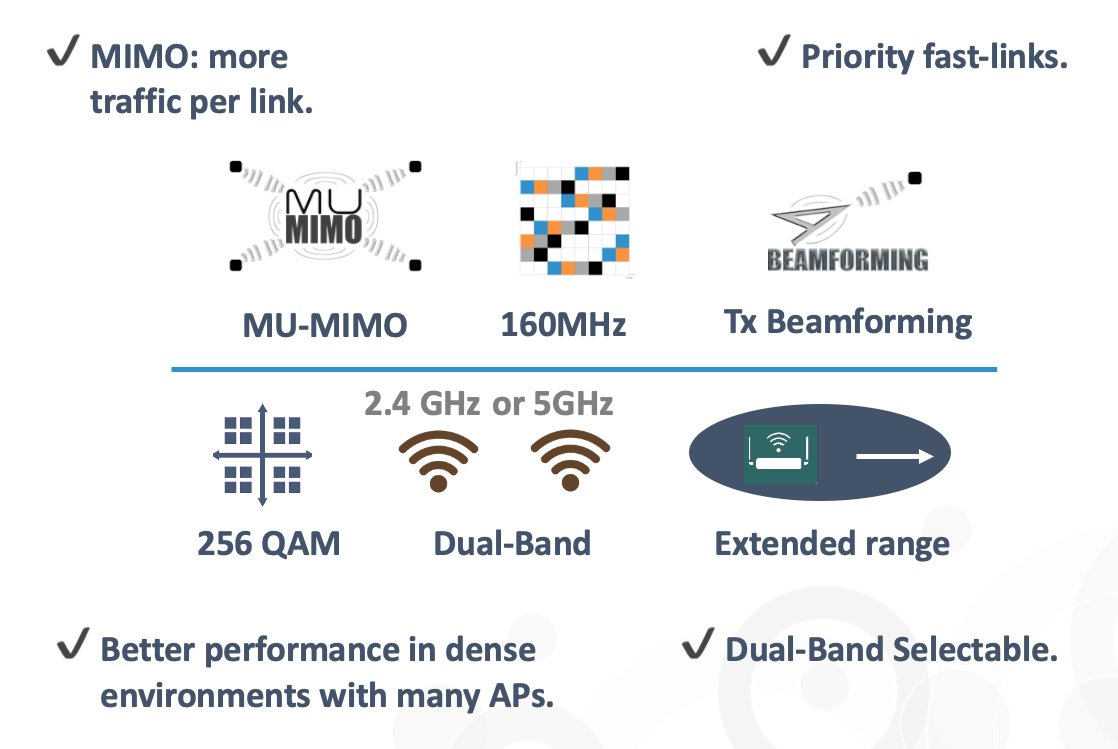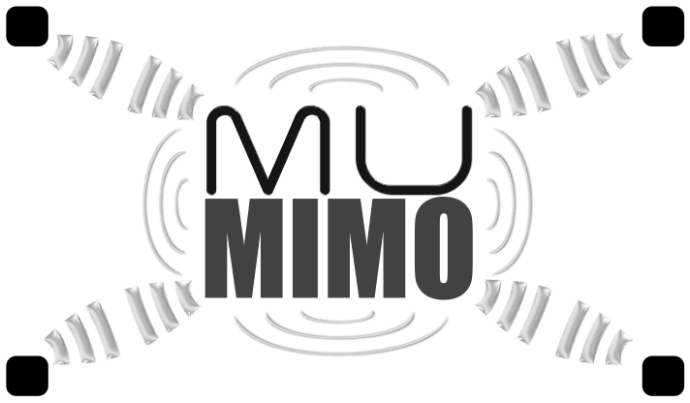AIRETOS Wi-Fi 5: advanced features such as MU-MIMO and TX Beamforming increase network capacity and link connection robustness
Wi-Fi 5 is providing fast, reliable connections in two bands, even at dense environements.
Wi-Fi5 comes with a host of additional features to Wi-Fi4 aimed at enhancing connectivity experience with more clients per station and with higher data stream definitions, like in HD-streaming.those include: Extended channel binding, 160 MHz channel bandwidth support for up to eight spatial streams (vs. four in 802.11n), downlink multi-user MIMO, space-division multiple access (SDMA), modulation 256-QAM rate, beamforming with standardized sounding and feedback, and more.
E98 Class
WiFi5 Infrastructure
Dual-Band selectable, up to 3x3 Wi-Fi Wireless Infrastructure Networking modules for indoor and outdoor applications. The design allows the flexible use of the QCA98xx ASIC family, with no feature compromises.
Based on the Peregrine reference design.
E61 Class
WiFi5 & BT5.0
Commercial Qualcomm WiFi5 with xFEM M.2 E-key modules with Worldwide Approval Status and cross-OS driver support that permit facilitated deployment . QCOM QCA61x4 ASICs in its core, with optional use of the automotive grade QCA65x4 ICs.
Based on the Rome reference design.
MRSP Starting at $24.95
Solid, mature & plenty of features.
Introduced in 2014 as IEEE 802.11ac and know as Gigabit Wi-Fi the standard has been retroactively labelled as Wi-Fi 5.
Wi-Fi5 is the first wifi standard in which beam-forming has been added to the MIMO. Multi-user MIMO is also introduced so to support more targeted and higher throughput. That is enhanced by the addition of wider bandwidths ( upto 160 MHz ) and the higher number of spatial streams ( upto 8) and higher QAM density.
Wi-Fi 5 made us feel freer and empowered by ICT throughout living, working and utilitarian spaces.

Compliance
New standards mean new skills and increased complexities. Wi-Fi5 testing adds wider 160Mhz bands and combination modes.


MU-MIMO
-
Increases capacity
-
Results in higher speed per user
-
Ideal for high-bandwidth applications
Tx Beamforming
-
For directional efficiency
-
Increased targeted throughput
-
Strong application links



